Keeping your sneakers in excellent condition is an essential aspect of maintaining a stylish appearance and prolonging the life of your footwear. Understanding the various sneaker materials, proper preparation, cleaning techniques, and maintenance is vital for preserving their pristine condition. This guide will provide you with the knowledge you need to become an expert in sneaker care, ensuring your sneakers remain clean and free from damage.
Cleaning Materials for Sneakers
One essential aspect of cleaning sneakers effectively is understanding the different materials that they are made from. This knowledge will help you identify the appropriate cleaning methods and products to use to prevent damage to your footwear. Leather, suede, mesh, and rubber are common materials used in sneakers, each with its own specific cleaning requirements.
Cleaning Leather Sneakers
Leather is a popular material for sneakers because of its durability and stylish appearance. It requires cleaning products and techniques that are suitable for its natural properties. When cleaning leather sneakers, avoid using harsh chemicals or excessive water, as these can damage the leather. Instead, use a gentle cleaner designed specifically for leather or a mixture of mild soap and water. Apply the cleaning solution with a soft cloth, making sure to wring it out well to avoid soaking the leather, and gently wipe away any dirt or stains. After cleaning, apply a leather conditioner to help maintain its natural oils and prevent cracking.
Cleaning Suede Sneakers
Suede sneakers have a more delicate surface, which means they require extra care when cleaning. It is important to avoid using water or liquid cleaners, as they can leave behind marks or cause the suede to become stiff. Before cleaning suede sneakers, invest in a suede brush to remove any loose dirt or debris. If there are stains on your suede shoes, use an eraser or special suede cleaner designed for the material. It is also essential to protect your suede shoes from water and moisture using a suede protector spray to maintain their appearance.
Cleaning Mesh Sneakers
Mesh is another common material used in sneakers, particularly in athletic shoes, due to its breathability and lightweight properties. Mesh sneakers need a gentle cleaning approach to avoid damaging the fibers. Start by removing any loose dirt or debris with a soft brush or cloth. For stains, use a combination of mild soap and warm water or a specialized sneaker cleaner. Apply the cleaning solution with a gentle scrubbing motion using a soft brush, taking care not to snag the mesh fibers. After cleaning, rinse the shoes with water and air dry, avoiding direct sunlight or heat sources.
Cleaning Rubber Elements
Rubber elements are often found on the soles and toe caps of sneakers, giving them extra durability and protection. This material can usually be cleaned with mild soap and water or a specialized sneaker cleaner. Use a brush, cloth, or sponge to scrub away dirt and stains, ensuring you reach any grooves or textured areas. If the rubber areas have stubborn scuff marks, you can also try using a magic eraser to remove them. However, be cautious not to apply too much pressure or use the magic eraser on other parts of the sneakers, as it can cause damage.
Understanding the properties of different materials that make up your sneakers, such as leather, suede, mesh, and rubber, is crucial for ensuring they remain in excellent condition. By tailoring your cleaning techniques to suit the specific material, you will achieve the best results and maintain the longevity of your shoes.
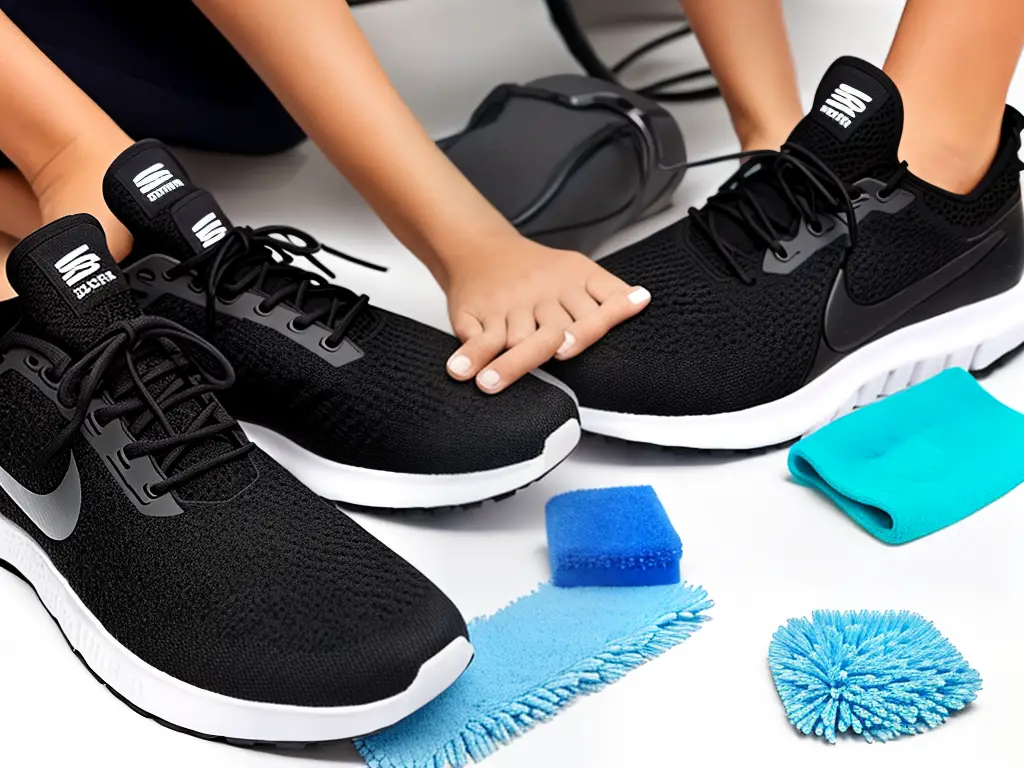
Preparation Steps for Cleaning Sneakers
Before starting to clean your sneakers, it is essential to remove any dirt and debris from the surface. This can be done by using a soft brush, such as a toothbrush or a dry cloth, to gently brush away any loose dirt from the upper, tongue, and sole of the shoe. For sneakers made of suede or nubuck, it’s particularly important to use a dedicated soft-bristle brush or a suede eraser to prevent possible damage to the delicate material. In cases where shoes are excessively dirty or muddy, using a slightly damp cloth to remove any larger chunks of dirt or mud is recommended before proceeding with the cleaning process.
Another important preparation step is to unlace your sneakers. Removing the shoelaces not only prevents tangling during cleaning, but also allows you to take a closer look at the tongue and eyelets, which can accumulate a significant amount of dirt over time. Additionally, unlacing your shoes enables you to thoroughly clean your shoelaces separately, ensuring that every part of your sneaker looks fresh and clean.
Inserting a shoe tree or alternative support is also highly recommended during the cleaning process, as it helps to maintain the shape of your sneakers. A shoe tree is an adjustable device made from wood or plastic that expands within the shoe, mimicking the natural shape of your foot. Using a shoe tree during cleaning prevents the shoe from losing its form or collapsing inward as a result of dampness. If you don’t have a shoe tree available, you can also use items such as balled-up newspaper or even rolled-up socks to provide adequate support and maintain the shape of your sneakers while they are being cleaned.
When it comes to the actual cleaning process, understanding the materials that make up your sneakers is crucial. This is because certain cleaning solutions and methods can cause damage to specific materials or finishes if not used correctly. For example, leather sneakers may require a specialized leather cleaner, whereas suede and nubuck sneakers require a more delicate approach to avoid damaging their texture. For canvas and synthetic materials, a mild soap and water solution is generally a safe and effective option.
One of the essential aspects of cleaning sneakers effectively is selecting the appropriate cleaning products, as the wrong choice may damage the shoes. There are various types of sneaker cleaning products, such as sprays, gels, and foams, each specifically designed to target and clean different materials effectively. Therefore, it’s important to identify the type of material your sneakers are made of, such as leather, suede, or fabric, so you can choose the appropriate cleaning solution.
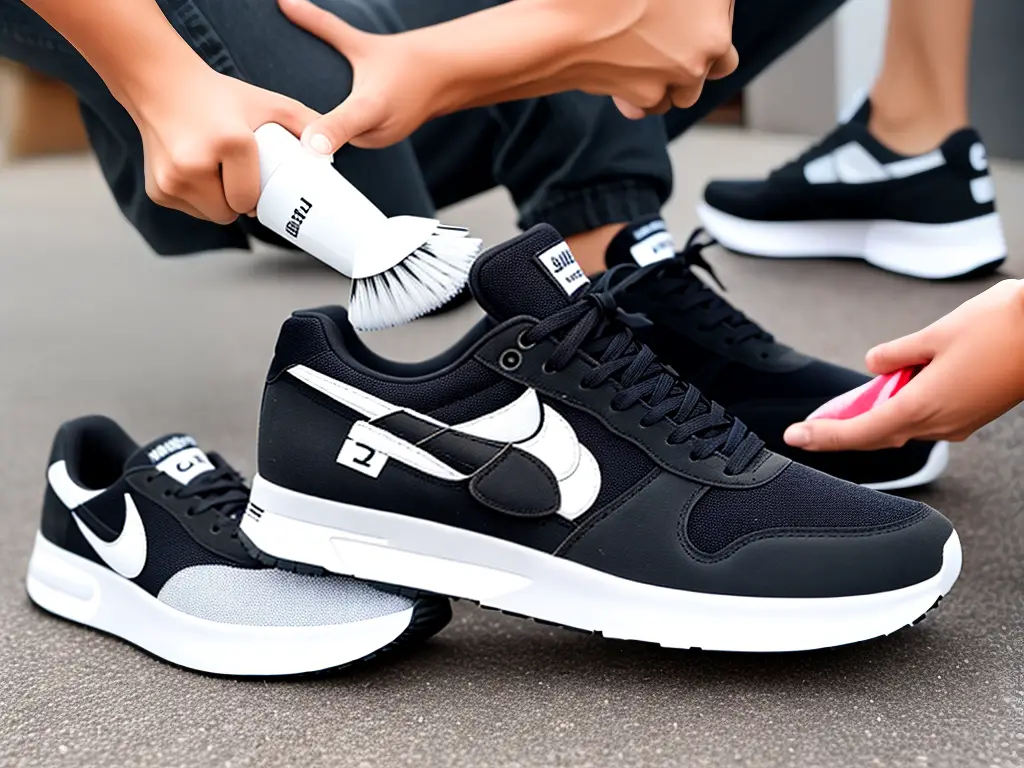
Choosing the Right Sneaker Cleaning Products
After ensuring your sneakers are thoroughly cleaned, consider using a protective spray to keep them looking fresh for a longer period of time. This additional step can help protect your sneakers from future dirt and stains while prolonging the lifespan of the materials. Different types of protective sprays can work well for various shoe materials, such as suede, leather, and fabric. Applying a protective spray after cleaning is an excellent final touch to maintain the cleanliness and appearance of your sneakers.
Spray-On Cleaners: Spray-on shoe cleaners are an efficient and easy way to clean sneakers, as they effortlessly reach all areas of the shoe. They are typically formulated for use on a wide range of materials, such as leather, vinyl, and canvas. Some spray products also contain water and stain repellent properties, providing a protective barrier and prolonging the shoe’s clean and fresh appearance. However, it’s essential to read the product label to ensure it is safe to use on your sneakers’ specific materials.
Cleaning Gels: In contrast, cleaning gels are specially designed for more delicate materials such as suede, nubuck, and other fabrics prone to water damage. These gels are typically applied to a soft brush or cloth before gently working the product into the material to create a lather. Gels can yield excellent results in removing stubborn stains and dirt from sneakers without damaging the material. Therefore, when dealing with delicate materials, a high-quality cleaning gel may work better than spray-on cleaners.
Foam Cleaners: Foam-based sneaker cleaners are another popular choice due to their capability to deeply cleanse and lift dirt from the shoe’s surface. They are generally safe to use on most materials, including leather, suede, nubuck, and fabric, and usually applied using a foam applicator or soft brush to create a lather. Many foam cleaners also feature a built-in deodorizer, helping to neutralize odors and keep your sneakers smelling fresh.
Additional Ingredients: When selecting the right cleaning products for your sneakers, it’s crucial to consider any additional ingredients that may help preserve the shoe’s initial appearance or provide longer-lasting freshness. Natural solutions, such as those using coconut or jojoba oil, have proven to be gentle yet effective in cleaning various materials. Always read the product’s instructions and make sure it is compatible with your sneakers’ material to ensure the best possible results and maintain your shoes’ longevity.
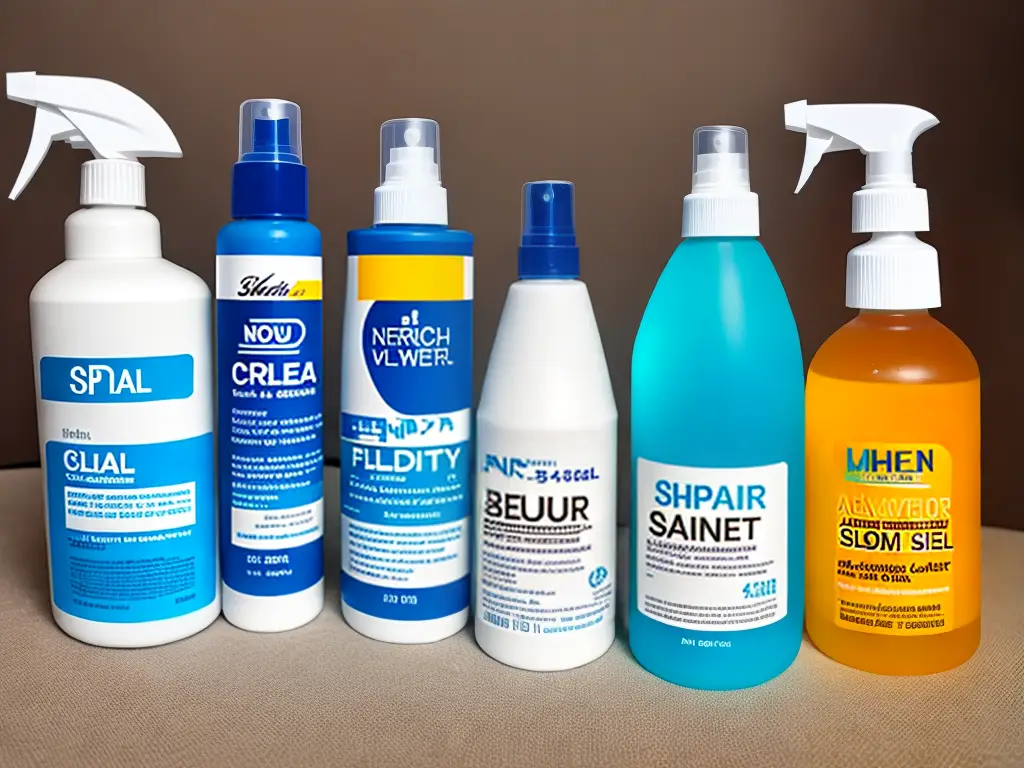
Specialized Sneaker Cleaning Tools
Alongside choosing the appropriate cleaning products, understanding the use of specialized sneaker cleaning tools is essential to keep your sneakers in pristine condition. Brushes, microfiber cloths, and sponges are some common tools that can safely clean different materials. Knowing which tools are best suited for each sneaker component will prevent potential damage and maintain their appearance, ensuring your shoes stay fresh and clean for a longer time.
Sneaker brushes come in various forms, each designed for a specific cleaning purpose. Soft-bristle brushes are perfect for delicate materials such as mesh, knit, and suede, ensuring that these materials are not damaged during the cleaning process. Stiff-bristle brushes, on the other hand, are excellent for cleaning soles and other hard surfaces on sneakers, as they can effectively remove stuck-on dirt and grime without being too abrasive. Investing in a high-quality brush set that caters to a variety of materials will help you thoroughly clean your sneakers without ruining their texture or appearance.
Microfiber cloths are another essential tool for sneaker maintenance. These cloths are designed with microscopic fibers that can efficiently pick up debris and clean surfaces without causing scratches. In addition to being highly absorbent, microfiber cloths are also excellent for drying sneakers after a thorough cleaning or a wet encounter. They can be used to wipe down sneaker surfaces during routine cleaning and are an essential part of stain and spot removal, ensuring that you can effectively lift and remove stains without causing further damage to your sneakers’ materials.
Sponges also play a crucial role in sneaker cleaning, especially when it comes to tackling dirt and grime on various surfaces. It’s essential to use a non-abrasive and absorbent sponge for best results. A sponge’s porous nature allows it to effectively pick up dirt and debris while also holding a sufficient amount of cleaning solution. Sponges with both soft and abrasive sides can also be helpful in removing stubborn stains, allowing you to gently scrub the area without causing damage to the material.
Keeping your sneakers clean and well-maintained not only helps them look fresh but also increases their longevity. To ensure a safe and thorough cleaning experience, consider using a sneaker laundry bag that allows you to protect your sneakers while putting them in a washing machine. This prevents the sneakers from becoming damaged or tangled, and prepares you to focus on understanding the right cleaning methods for the different materials that make up your shoes.
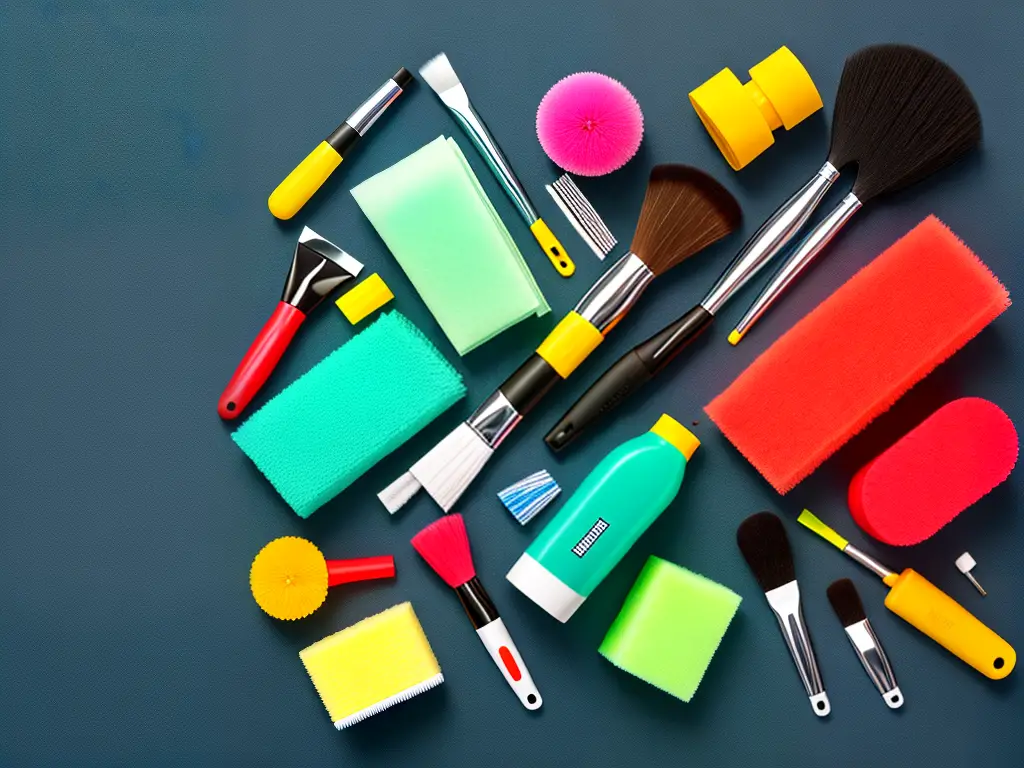
Effective Cleaning Methods for Different Sneaker Materials
It is crucial to familiarize yourself with the various materials of your sneakers to effectively clean them without causing damage. For instance, delicate materials like suede require gentle rubbing. To clean suede shoes, start by using a soft-bristle brush to remove any loose dirt or debris. Next, employ a suede eraser or a pencil eraser to rub away any tough stains or marks. Gently brush the entire shoe in the same direction to restore the nap of the suede afterwards. If the shoes are still not clean, use a small amount of white vinegar on a cloth to wipe away the remaining stains. Allow the shoes to air dry and avoid direct heat sources, such as a radiator or direct sunlight, to protect the material from damage.
Another common sneaker material is leather, which requires a different cleaning method. To start, create a mixture of mild dish soap and water in a small container, and then dip a cloth or soft brush into the soapy water. Gently scrub the entire leather surface, being careful not to saturate the leather with the soapy water. After cleaning, use a dry cloth to wipe away any remaining soap residue and let the shoes air dry at room temperature. Make sure to avoid direct heat sources to prevent damage or cracking of the leather. Once the sneakers are completely dry, consider applying a leather conditioner to maintain the quality and longevity of the material.
For a more durable material such as rubber, deep scrubbing can help remove dirt and stains effectively without causing damage. Begin by mixing a solution of mild dish soap and warm water in a bowl. Use a toothbrush or small scrub brush to vigorously scrub the rubber parts of the sneakers, paying special attention to the outsoles and any other heavily soiled areas. After completing this step, wipe the rubber surfaces with a damp cloth to remove any remaining soap residue. Allow the sneakers to air dry, again avoiding direct heat sources to protect the integrity of the shoes.
Mesh and fabric materials require a gentle cleaning process to maintain their appearance and prevent damage. First, remove any loose dirt or debris from the shoes using a soft-bristle brush or cloth. In a small container, mix a solution of mild dish soap and warm water, then dip a cloth or soft brush into the soapy solution. Gently scrub the mesh or fabric surfaces, being careful not to over-saturate the material. Once clean, wipe the shoes with a damp cloth or sponge to remove any remaining soap residue. Lastly, stuff the sneakers with paper towels or white tissue paper and let them air dry to help maintain their shape while absorbing any excess moisture.
Cleaning your sneakers regularly is crucial for maintaining their overall appearance, cleanliness, and longevity. To ensure you are doing it effectively, it is essential to understand the different cleaning techniques required for various shoe materials. In addition, giving equal attention to the insoles and shoelaces is necessary since they can harbor bacteria and dirt, contributing to bad odors and overall uncleanliness.
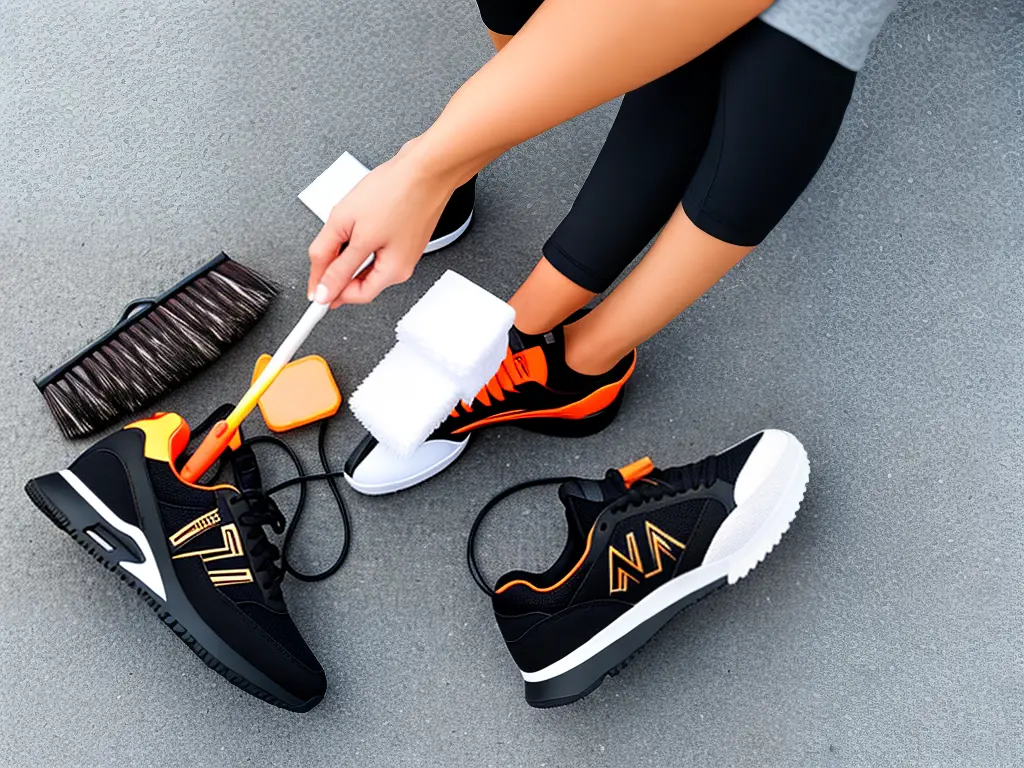
Proper Drying and Deodorizing Techniques for Sneakers
Once the cleaning is done, properly drying your sneakers is essential for maintaining their shape and integrity, as well as preventing any further odors from developing. To do this, air dry your sneakers by placing them in an open, well-ventilated space, such as near an open window, a porch, or a garage. This method allows air to circulate around your shoes, effectively drying them. Avoid direct sunlight, which can cause fading or material damage. To speed up the drying process, use a fan to create additional airflow around your sneakers.
Another useful drying technique is to stuff your sneakers with paper towels or newspapers. This method helps absorb excess moisture from the shoes and helps maintain their shape during the drying process. Be sure to change the stuffing material every few hours to maximize its moisture-absorbing properties. Avoid using heat sources like hair dryers or radiators to dry your sneakers, as these can cause the materials to warp, shrink, or become brittle, ultimately damaging your shoes.
Deodorizing your sneakers is an important step to keep them fresh and eliminate unpleasant odors. One simple and natural approach to deodorize your shoes is to use baking soda. Sprinkle a generous amount of baking soda inside your shoes and let it sit overnight. The baking soda will absorb the odors, and you can simply tap out the excess the next day. If you prefer, there are commercial deodorizers or odor-absorbing balls available that can be placed in your shoes to achieve the same effect.
Another method for removing unpleasant odors is to freeze your sneakers. Place them in a sealable plastic bag and put them in the freezer overnight. The cold temperature will help kill odor-causing bacteria, leaving your shoes refreshed. Be sure to let them thaw thoroughly before wearing them again.
Keeping your sneakers clean and fresh-smelling not only helps maintain their appearance but also extends their lifespan. One effective way to ensure good shoe hygiene is by regularly removing the insoles and airing them out after each wear, especially when exposed to sweat. Additionally, consider using an antibacterial spray to kill bacteria and prevent odors from developing. Employing a combination of proper drying techniques and deodorizing methods will contribute to maintaining your sneakers in optimal condition.
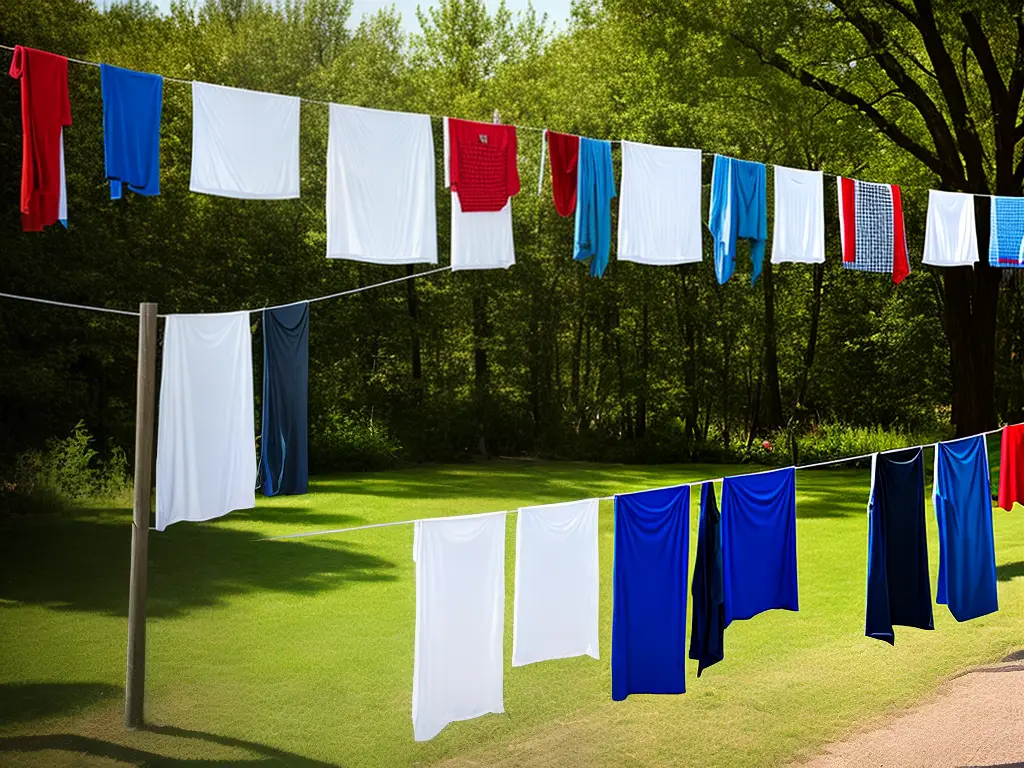
Tips for Maintaining Your Sneakers
Regular cleaning is essential for ongoing sneaker maintenance, helping them look their best and last as long as possible. Depending on the materials your sneakers are made of, different cleaning methods and techniques may be necessary to prevent damage or discoloration. By frequently and appropriately cleaning your sneakers, you not only preserve their appearance but also contribute to their longevity, ensuring that you get the most out of your favorite pair of shoes.
A vital part of sneaker maintenance is the use of protectant sprays or wipes. These products can help prevent stains and keep your sneakers looking fresh and clean. Before using any protectant spray, make sure to test it on a small inconspicuous part of your sneaker to ensure that it doesn’t cause any damage or discoloration. Once you have ensured compatibility, apply the protectant spray to your sneakers to create a barrier that helps repel water and dirt, making it easier to clean them in the future.
Another essential aspect of ongoing sneaker maintenance is storage. Storing your sneakers in a cool, dry place when not in use can help prevent unwanted smells, mold, and mildew. It’s also a good idea to stuff your sneakers with tissue paper or newspaper to help them keep their shape and absorb any moisture that might be present. If your sneakers become wet or damp, avoid exposing them to direct heat, as this can cause the materials to weaken and break down. Instead, let them air dry naturally.
If your sneakers happen to get stained, act quickly to address the issue. The sooner you begin to treat a stain, the easier it will be to remove it. Use a soft-bristled brush and a mild cleaning solution to gently scrub the affected area. Remember always to follow the care instructions provided by the sneaker manufacturer to avoid accidentally causing more harm than good.
Regular maintenance and care are crucial for extending the life and preserving the appearance of your sneakers. Inspect your sneakers frequently for signs of wear or damage, such as worn-down soles. Consider replacing worn-out sneakers with new ones to prevent further harm or injury. By taking care of your sneakers in these ways and properly maintaining them, you’ll find that they’ll look better and last longer, making it a worthwhile investment of your time and effort.
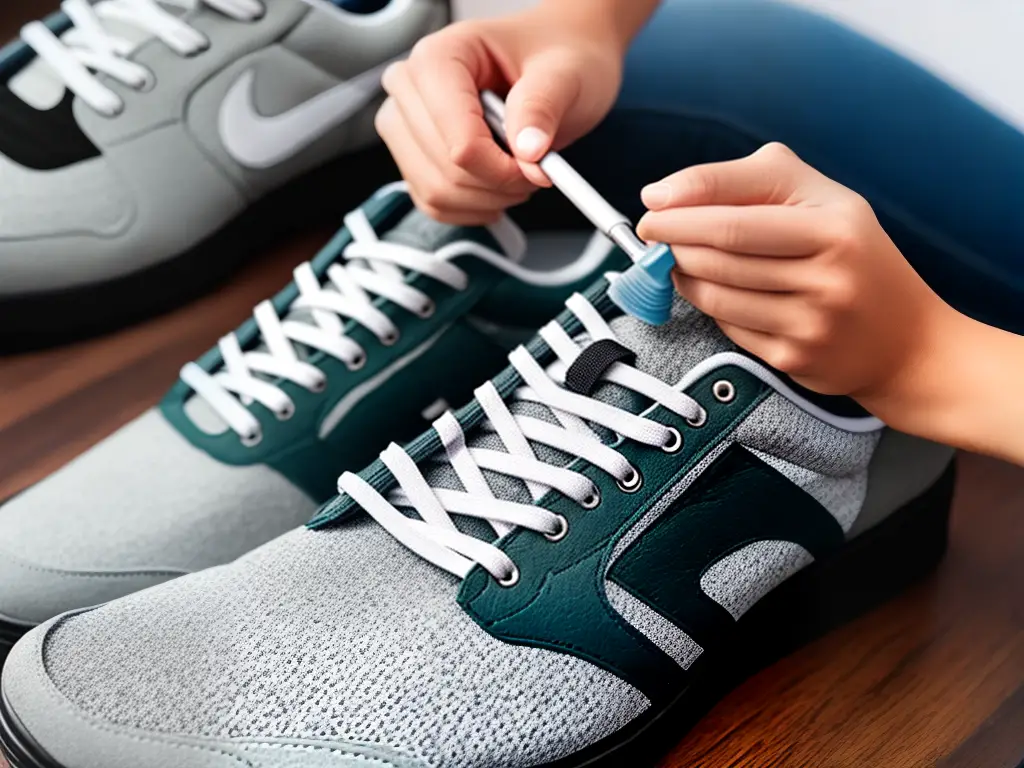
Cleaning Sneakers: Tips and Tricks
Addressing stubborn stains is an essential aspect of cleaning sneakers. To effectively tackle these stains, it’s important to understand the type of stain and the material of your sneakers. For instance, stains on fabric or mesh shoes may require a cleaning solution specifically formulated for fabrics. Create a mixture of water and mild detergent or use a dedicated sneaker cleaner. Gently dab the solution onto the stained area using a soft brush or cloth, being careful not to scrub too hard to avoid causing further damage. Rinse the area thoroughly with water and let the sneakers air dry to maintain a fresh and clean appearance.
Scuffs and marks on leather or synthetic materials can be another challenge in sneaker cleaning. First, try gently rubbing the scuffed area using a clean, damp cloth or a soft brush. If this doesn’t work, you can use a magic eraser or a mixture of water and mild soap to clean the specific area with scuffs. However, it is crucial to test the cleaning solution on an inconspicuous area first to ensure it won’t damage the material. After applying the solution, wipe the area with a clean, damp cloth and allow it to air dry.
Yellowing of the soles, midsoles, or the rubber parts of the sneakers can be frustrating, and they can become an eyesore even after cleaning. To address this issue, a common solution is a mixture of baking soda and hydrogen peroxide. Combine equal parts of these ingredients to create a paste, then apply it to the yellowed areas using a brush or a toothbrush. To speed up the whitening process, you can place your sneakers in direct sunlight, as the UV rays will activate the hydrogen peroxide. Check the sneakers periodically to ensure that the paste is not over-drying the material, rinse thoroughly with water, and allow them to air dry.
Dealing with lingering odor in sneakers can be a daunting task. The primary method to combat this issue is to ensure that you dry your shoes properly after cleaning. Sprinkle some baking soda inside and leave them overnight to help absorb moisture and neutralize odors. A lightly scented fabric softener sheet placed in the shoe after cleaning can also help keep the sneakers smelling fresh. Always give your sneakers enough time to air dry, as putting them away while still damp can encourage the growth of bacteria and cause odor issues.
Maintaining your sneakers well can prolong their lifespan and help you avoid spending money on frequent replacements. By addressing common sneaker cleaning problems effectively and safely, you can keep your shoes looking fresh and feeling comfortable for longer. Remember to treat stains, scuffs, or marks with care and always test new cleaning solutions on a small area first to avoid causing any additional damage. Frequent cleaning sessions and proper drying can also help prevent the build-up of dirt, stains, and unpleasant odors in your sneakers.
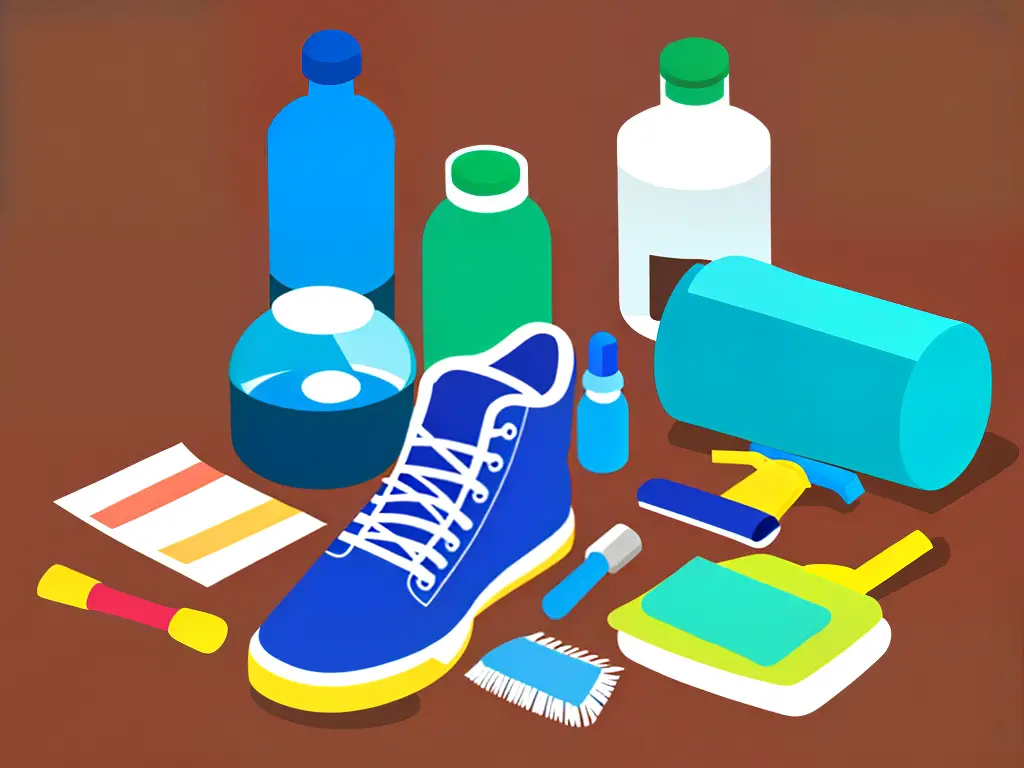
Mastering sneaker cleaning and care is about more than just keeping your footwear looking fresh. It also involves learning about the specific materials, tools, and methods required to prevent damage and extend the life of your sneakers. By following the advice provided in this guide, you can confidently tackle any sneaker cleaning challenge and keep your favorite pairs looking their best for years to come.